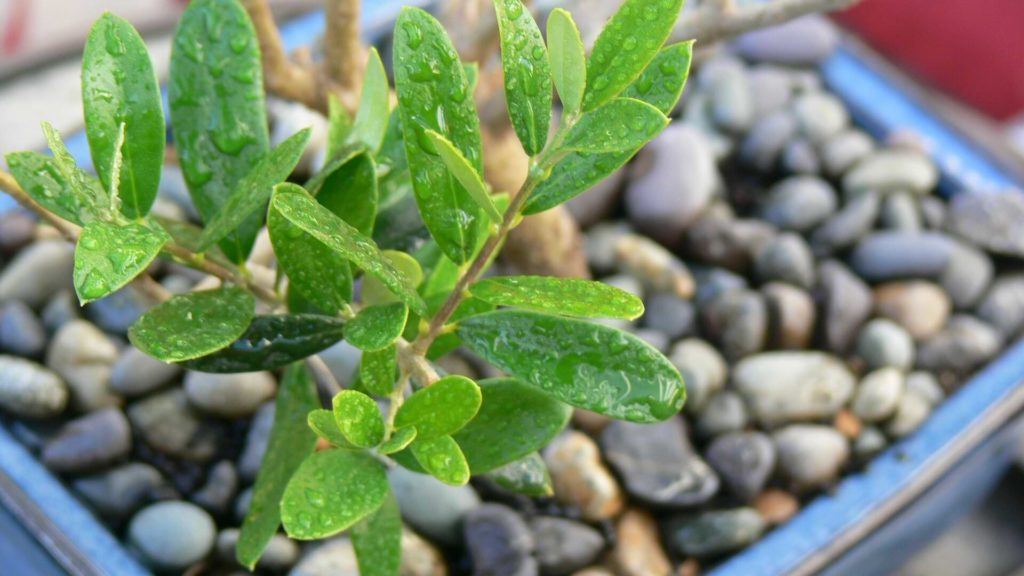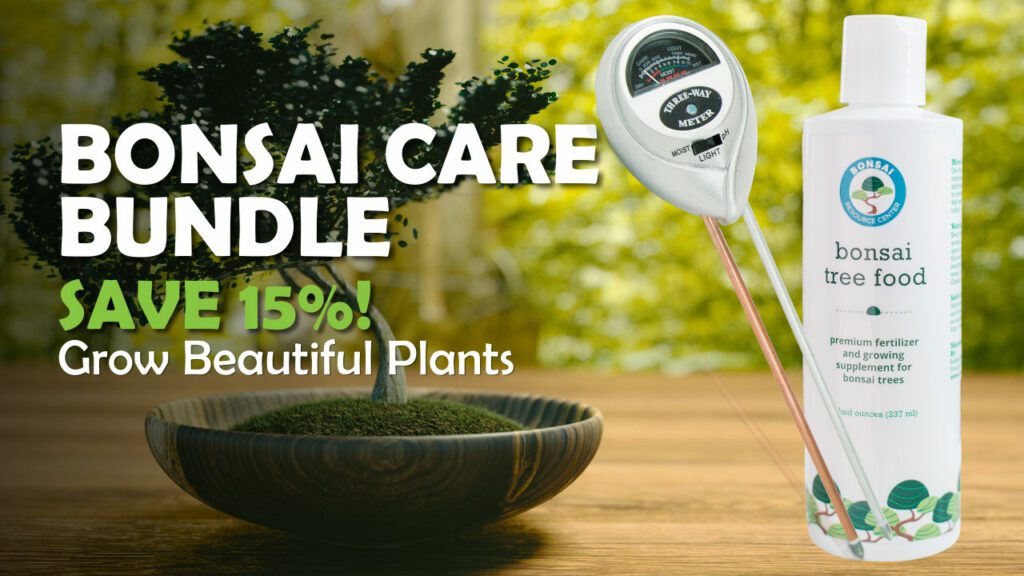All You Need to Know About Watering Your Bonsai
When caring for your bonsai, knowing when to water it is one of the most important skills to master. Some houseplants do well on a watering schedule (once a day or once a week, for example). But bonsai are a little different from other houseplants when it comes to watering.
Your bonsai requires a more individualized approach to watering. Each tree is different. And determining when it needs to be watered depends on things like the amount of sunlight it’s getting, the soil composition, or the time of year.
First things first. It’s important to set yourself—and your bonsai—up for success! Make sure you have the right container and soil mixture for your bonsai to thrive.
Here Are a Few Things to Consider When You First Bring Your Bonsai Home:
The container: Some bonsai come potted in decorative containers that aren’t exactly ideal for them to thrive. Ditch it. Instead, choose a pot that is about the same size as the trunk of your tree and about ⅓ the height. A pro tip for success: Make sure your container has drainage holes in the bottom. This allows the water to run out of the pot so the roots don’t sit in water and get soggy.
The soil: Not only does the soil composition provide nutrients to your bonsai, but it affects its ability to drain. A pro tip for success: Place a thin layer of gravel at the bottom of the pot to help it drain. The goal is for your soil to drain well but still hold enough water to saturate the root system.
When to water your bonsai:
Because every tree is different, it’s important to get to know your tree. When you first bring your tree home, get into a routine where you check its soil daily. This helps you understand when it needs to be watered. A good rule of thumb is to never let your bonsai’s soil dry out completely. As you observe your bonsai, you will find that sweet spot for when and how much to water it.
Here Are 3 Easy Tried-And-True Methods That Help You Know the Best Time to Water Your Tree:
The Fingertip Method
It sounds too good to be true, but a common, tried-and-true method for many bonsai enthusiasts is to simply use your finger. To do this, gently press the tip of your finger about an inch down into the soil and leave it there for 20 seconds. This helps you get a good sense of how damp the soil is. If the top inch of soil feels dry to the touch, go ahead and water it. If it feels wet or even damp, your bonsai doesn’t need to be watered now.
The Chopstick Method
In this method, you use a wooden chopstick to check the moisture level of your soil. Gently insert the chopstick into the soil about an inch deep. The best placement of the chopstick is halfway between the bonsai trunk and the edge of the container. This helps you get an accurate reading. After about 10 minutes, remove the chopstick and notice how it looks. If it’s dark and moist with some soil on it, there’s no need to water your bonsai now. If it’s the same color as the rest of the chopstick and dry, your bonsai needs a good thorough watering.
The Moisture Meter Method
A moisture meter is an inexpensive gardening instrument that has two parts: a probe and a scale. This is the most accurate way to measure the water content of the soil at the root level of your tree. Gently insert the probe into the soil aiming the tip near the root ball. The scale then shows a moisture level reading. Most scales range from 1 (dry) to 10 (wet), so it’s very easy to read.
Now that you’ve decided that your bonsai needs to be watered, let’s talk about how.

A Few Simple Watering Tips
- Use a gentle stream of water and hold it above your bonsai. This is called top-watering and is meant to mimic rainfall. You want to try to keep the soil from being flushed away so pour the water slowly. A fine nozzle on your hose or watering can work great here!
- If water begins to pool on top of the soil, pause and let it soak in. Then continue to water until the soil is completely saturated.
- Another favorite watering technique is called bottom-watering. To do this, place your bonsai in a small tub or sink. Slowly fill it with water until the water level reaches the top of your pot.
- Be sure to water thoroughly. You want to see water flowing out of the drainage holes on the bottom of the pot. The roots are very fine, so the water may flow quickly through the soil. Wait for a few minutes and water it again.
Want to show your plants some love? Check out some of my personal favorite products in our Bonsai store. Your bonsai will thank you!
Join the Bonsai World
At The Bonsai Resource Center, our goal is to equip you with everything you need to grow and maintain a truly beautiful bonsai tree. This is our passion, and we want it to be yours as well! Whether you are a bonsai beginner or are looking to hone your skills, check out our other articles and visit our shop for all your bonsai needs. And connect with other bonsai lovers in our Facebook Group—we look forward to seeing you there!
Moisture Meter Chart
Different houseplants require different levels of moisture in the soil. Download this free Moisture Meter Chart and learn how to confidently water all of your houseplants.




